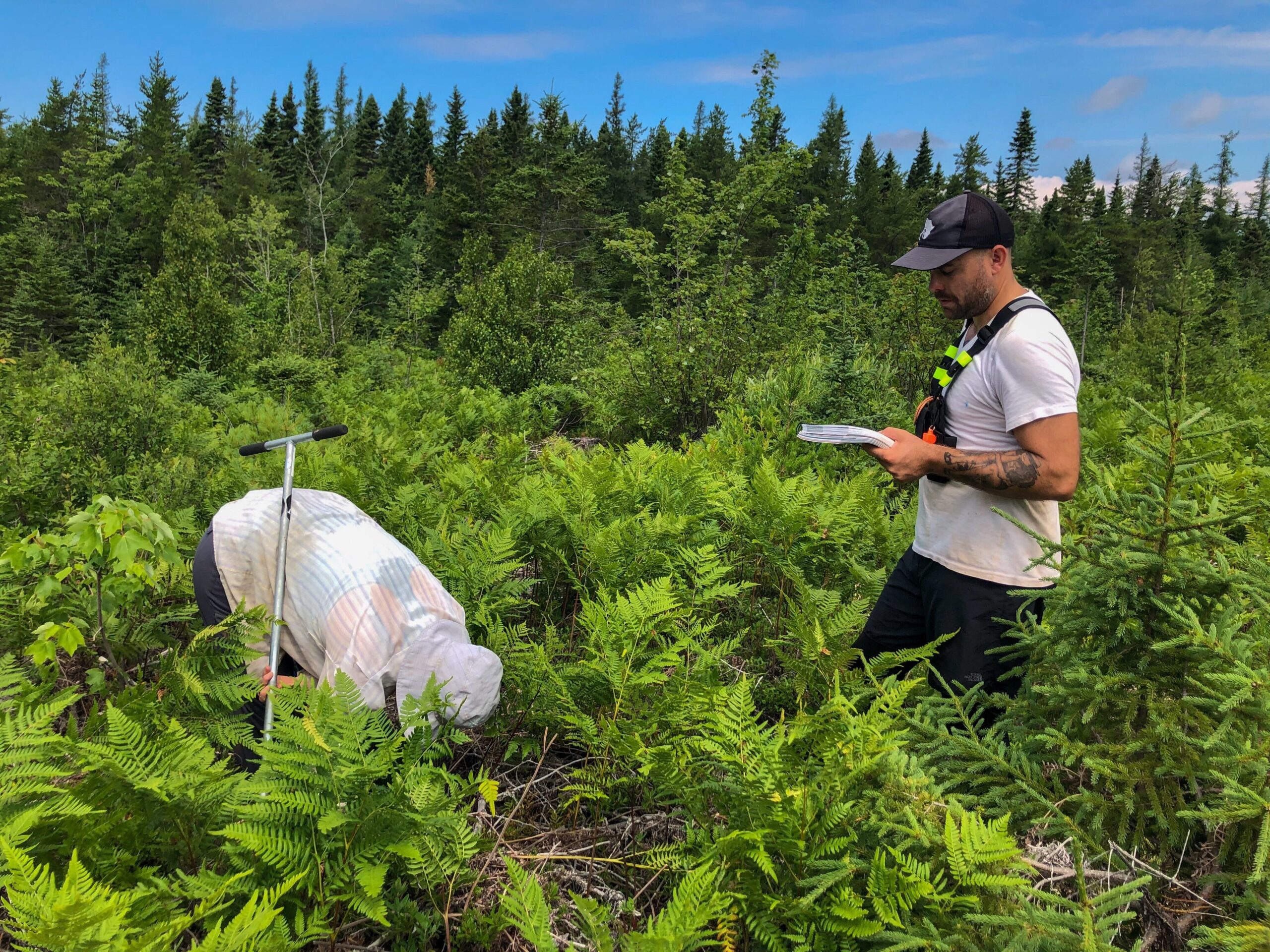What are forest regeneration surveys and why are they important?
By Monica Allaby, Posted on July 30, 2020
Healthy Acadian forests provide essential ecosystem services such as carbon sequestration, water regulation, wildlife habitat, and recreation. Today, however, less than 5% of the Acadian forest remains in a pre-colonial condition. This is due to long-term intensive land-use and forestry practices that favour single-aged, softwood-dominated forests. We need to protect healthy forests for the immediate climate security they provide, and support forest regeneration for future generations.
The restoration process
Forest restoration is an important part of our work in Atlantic Canada. We plant a diversity of native trees across New Brunswick, with a particular focus on the Chignecto Isthmus. The Chignecto Isthmus is the narrow piece of land that connects Nova Scotia to New Brunswick and to North America. It is critical to the long-term protection of many species at risk, such as the Mainland Moose.
Community Forests International has restored more than 250 acres of land on the Chignecto Isthmus. This week, our team braved heat and humidity to survey forest regeneration across those lands. We conduct these surveys a few years after planting, while the forest is still young.
Forest regeneration surveys are critical component to the restoration process. They allow us to determine how well trees are growing back (both trees that are regenerating naturally and those that we planted) and what the species composition is shaping up to be. We also collect important data on soils, rare and at-risk species, and vegetative competition on these sites.

Community Forests International staff take soil samples as part of a forest regeneration survey on the Chignecto Isthmus.
Climate Resilient Forests
After we have completed the surveys, we will use the data to develop management plans, which will guide the next decade of forest management. The goal with each of these forests is to reach a more climate change resilient condition. Through active management, we can restore them as healthy habitats for a variety of flora and fauna.
Community Forests International always pays special attention to the adaptive-capacity of particular tree species when developing restoration management plans. We have a good sense of which species are best suited to a changing climate in Atlantic Canada. By prioritizing those species, we can enhance the ecosystem service values of these new forests over time.
Community Forests International’s work on the Chignecto Isthmus is made possible through the generous support of the New Brunswick Environmental Trust Fund.
